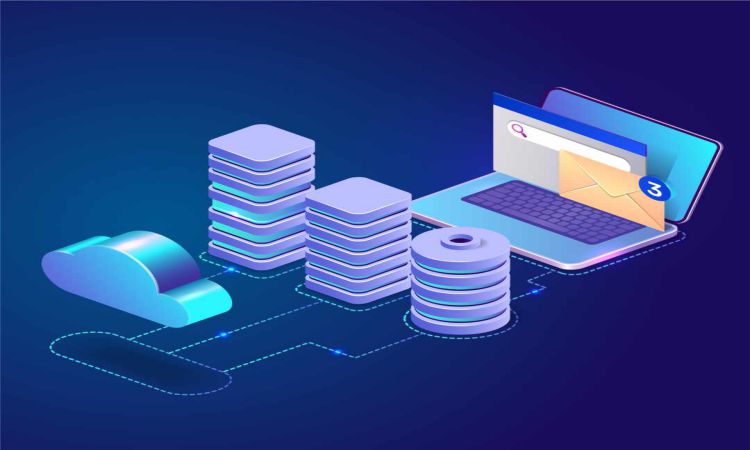 Containers provide a logical packaging mechanism to abstract application programs from the environment in which they run. They use Linux kernel features such as namespaces & groups to create a virtual environment.
Containers provide a logical packaging mechanism to abstract application programs from the environment in which they run. They use Linux kernel features such as namespaces & groups to create a virtual environment.
It enables them to start faster and require less bare-metal software than a VM, reducing operating costs. It also helps DevOps teams spend less time managing infrastructure and more on deploying applications.
Table of Contents
What is Container as a Service?
Container as a Service (CaaS) is a type of cloud computing that automates the hosting and deployment of containerized applications. It’s an essential solution for enterprises seeking to streamline their IT operations.
The best CaaS platforms include many solutions, including Kubernetes as a Service. These platforms allow enterprises to offload the management of K8s nodes and the K8s control plane to a service provider. It enables enterprises to scale their container workloads quickly and cost-effectively.
Some of the top CaaS providers include Google Cloud Engine and IBM Kubernetes Service. These platforms provide a robust platform for deploying and managing containers at scale. Moreover, they offer advanced functionalities that augment the capabilities of various applications.
The platform is agnostic, making deploying container-based applications in public, private, or hybrid environments easy. In addition, it supports multiple code languages and operating systems.
What is Docker?
Docker is an open-source tool that enables users to package up applications in containers, which are portable units that contain the code and dependencies required to execute the application. Before Docker, when you wanted to run a software application, you installed Linux, set up a LAMP stack, and ran your app. If your app went viral, you practiced load balancing by spinning another server to handle the extra traffic.
Docker’s architecture is layered, which enables it to smoothly adjust to changing needs without affecting performance or security. The tool consists of a client-server model with a command line interface (CLI), a server that hosts the container images, and a Rest API to communicate between them. The server runs a docked daemon responsible for creating and managing containers.
Each container in a docker image is isolated from other containers by default through a process isolation system known as namespaces and groups, which were introduced into the Linux kernel in 2008. It ensures that one container can’t affect or access other containers on the same host.
Running an app in a docker container is often faster than doing so on a VM. Docker’s layered approach also allows it to take up less space than a virtual machine because it only has to virtualize the layer that contains the application. With its efficient use of hardware resources, this tool can be utilized in low-resource settings.
What is Kubernetes?
Kubernetes (or k8s) is open-source container orchestration software that automates containerized apps’ deployment, scaling, and management. It is designed to eliminate manual processes and provide a platform that supports applications across physical, virtual, and multi-cloud environments. It provides agility, flexibility, scalability, portability, and high availability to help meet business objectives.
Containers are software packages that contain application code, libraries, and dependencies. They are standardized and immutable, enabling them to be run on a desktop computer, in a typical IT environment, or in the cloud. These containers can be used to construct a complete application, and Kubernetes manages them to create a cluster of services.
Pods, which are collections of containers that together make up a single, helpful application, are the primary mechanism Kubernetes uses to do this. Then, it plans the execution of pods on the nodes, the computer systems that serve as their hosts. Additionally, it monitors each pod’s health and modifies the architecture as required for optimum performance.
It allows DevOps teams to rapidly deploy new versions of an application and scale it as needed. They catch each other or receive external requests. It can also automatically refresh interfaces between applications as they change. It is called service discovery and is another vital aspect of a successful cloud-native strategy.
What is Cloud Foundry?
Pivotal Cloud Foundry (PCF) is a software-as-a-service platform. It includes an open-source platform and a suite of services for developers that optimizes their workflow from development to testing and deployment.
It also provides a powerful scalability feature that lets you expand operations horizontally when there is high demand for applications and scale them back down during lean seasons. It helps you to cut costs and improve your bottom line.
As an additional benefit, PCF can run on any infrastructure layer, including Google Cloud, Microsoft Azure, VMWare vSphere, and SoftLayer. It is also compatible with many third-party integrations and APIs.
The Cloud Foundry platform includes the BOSH deployment system, an open-source tool that delivers and deploys application containers. It also contains a build pack lifecycle, an external logging component, and a role-based access control service.
The Cloud Foundry environment supports the continuous delivery of application updates by facilitating automated testing and deployment on a developer’s local workstation, on a remote QA or staging environment, or even in production. Its container-based architecture allows applications deployed in any programming language and on various cloud platforms to suit specific workloads. It also enables developers to move applications between cloud environments within minutes without changing the code.






